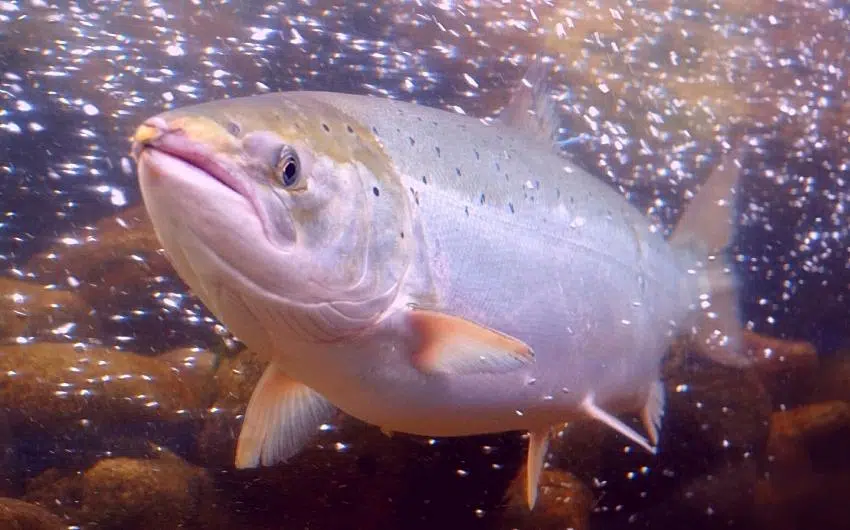Salmon are one of the most popular and commonly consumed fish worldwide Their pink, fatty flesh is tasty and nutritious But before you bite into a salmon fillet or sushi roll, you may wonder – are salmon carnivores?
The short answer is yes, salmon are carnivorous fish. Let’s take a closer look at the predatory diet of different salmon species.
Salmon Undergo Dietary Shifts As They Grow
Like humans, a salmon’s diet changes as it matures
Salmon eggs and newly hatched fry get their initial nourishment from the egg yolk sac. Once the yolk is absorbed, young salmon called parr start feeding on tiny zooplankton and aquatic insect larvae.
When salmon reach the juvenile stage called smolt, their diet shifts to bigger prey like amphipods, small shrimp, and aquatic insects.
As adult salmon, they transition to consuming other fish almost exclusively. At sea, Pacific salmon species like sockeye, pink, chum, and coho primarily eat small schooling fish like herring, sandlance, and capelin. The larger Chinook salmon may even eat other salmon!
In addition to small fish, adult salmon also eat squid, krill, and other marine creatures.
So at every stage of the salmon lifecycle, they rely on high-protein foods from animal sources to grow and thrive.
All Salmon Species Are Carnivores
There are five species of Pacific salmon and one Atlantic salmon species. Though there are some differences, all salmon are carnivores.
Popular West Coast salmon including:
- Chinook
- Sockeye
- Coho
- Pink
And the East Coast Atlantic salmon all shift from a juvenile insectivorous diet to consuming other fish as adults once they migrate out to sea.
Some key differences:
- Sockeye salmon have more gill rakers to filter tiny zooplankton.
- Pink salmon are the smallest species and eat the smallest marine prey.
- Chinook salmon reach the largest sizes and can handle bigger prey fish.
Regardless of variations in size and preferred prey, salmon species unanimously require a meat-based, high protein diet to support their growth and long migrations.
Why Salmon Are Predatory
Salmon are biologically adapted to obtain energy and nutrients from other animals. Here’s why:
-
Protein for Growth: Salmon need a complete, high-quality protein source for rapid growth. Animal foods provide the essential amino acids.
-
Fat for Energy: Salmon make long, energy-intensive migrations. Fatty fish provide more calories than low-fat plant foods.
-
Ocean Nutrients: Small fish and marine creatures supply omega-3s, vitamin D, iodine and other nutrients salmon require that plants don’t provide.
The Verdict: Yes, Salmon Are Carnivores!
From eggs to fry to adults, salmon depend on animal-based nutrition. Juveniles start with insects before switching to fish and other marine creatures as adults.
The high-protein, high-fat carnivorous diet gives salmon the dense nutrition they need for incredible growth and lengthy migrations.
So salmon of all species and life stages have a clear predatory feeding strategy. Their status as carnivorous fish is essential to salmon’s remarkable abilities!

Is Seafood Suitable for a Carnivore Diet?
FAQ
FAQ
Are salmon carnivores or omnivores?
Salmon are mid-level carnivores whose diet change according to their life stage. Salmon fry predominantly feed upon zooplanktons until they reach fingerling sizes, when they start to consume more aquatic invertebrates such as insect larvae, microcrustaceans and worms.
Why is salmon not considered fish?
Salmon [‘sa-mən]
A type of fish that starts its life in fresh water, grows up in the ocean, and returns to its home river to spawn. Salmon belong to the genus, Onchorhynchus. Steelhead also belong to this genus but are not considered true salmon. Salmon are fish.
Do salmon eat other animals?
When they’re in the ocean, young and adult salmon eat a wide variety of prey, including: Fish such as capelin, Atlantic herring, sand lance, barracudina and lanternfish. Crustaceans such as amphipods and euphausiids or “krill” Cephalopods like squid and octopus.
Why is Atlantic salmon illegal?
Atlantic salmon in the United States were once native to many coastal rivers northeast of the Hudson River in New York. But dams, pollution, and overfishing reduced their population size until the fisheries closed in 1948.
Is salmon a carnivore or omnivore?
The Truth About Salmon’s Diet Salmon are often considered to be carnivores, but their diet is more complex than that. While they are primarily carnivorous, they also consume a variety of other foods, including algae and smaller fish. This makes them omnivorous, rather than strictly carnivorous.
Are pink salmon carnivores?
Pink salmon are carnivores at all stages of their lifecycle. Pink salmon feed on small crustaceans, zooplankton ( tiny floating animals), and squid. In freshwater, they can also eat other fishes like bass or halibut, which are found in lakes that have plenty of vegetables for them to eat!
Do salmon eat fish?
When salmon are young, they are not big enough to eat fish. They will typically feed on zooplankton, a wide range of small invertebrates that inhabit the water column. Young salmon spend the first few years of their lives in freshwater, feeding on small aquatic insects like mayflies and stoneflies. Sometimes they’ll eat some fish!
What do salmon eat in the ocean?
In conclusion, salmon play a vital role in the ocean’s ecosystem as both predators and prey. Their diverse diet consists of a wide range of invertebrates, fish, and other small animals. As we’ve explored, salmon feeding habits vary depending on their stage of development, environment, and the ocean zone they inhabit.
What do salmon fry eat?
Salmon are mid- level carnivores whose diet change according to their life stage. Salmon fry predominantly feed upon zooplanktons until they reach fingerling sizes, when they start to consume more aquatic invertebrates such as insect larvae, micro crustaceans and worms.
What does red salmon eat?
Juvenile sockeye salmon feed on zooplankton (tiny floating animals), amphipods, and insects in freshwater. But when they migrate to the ocean, their diet changes dramatically!
